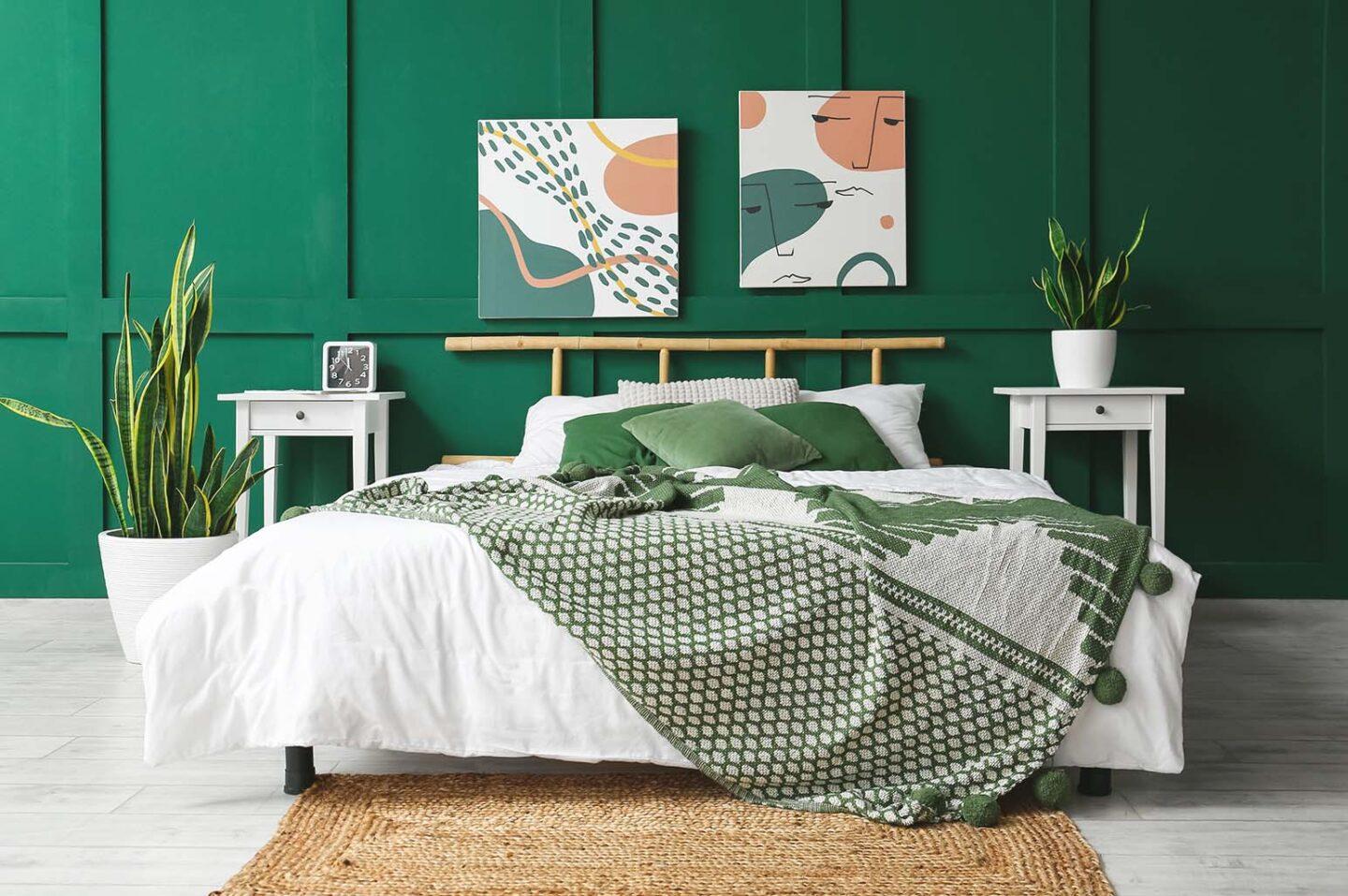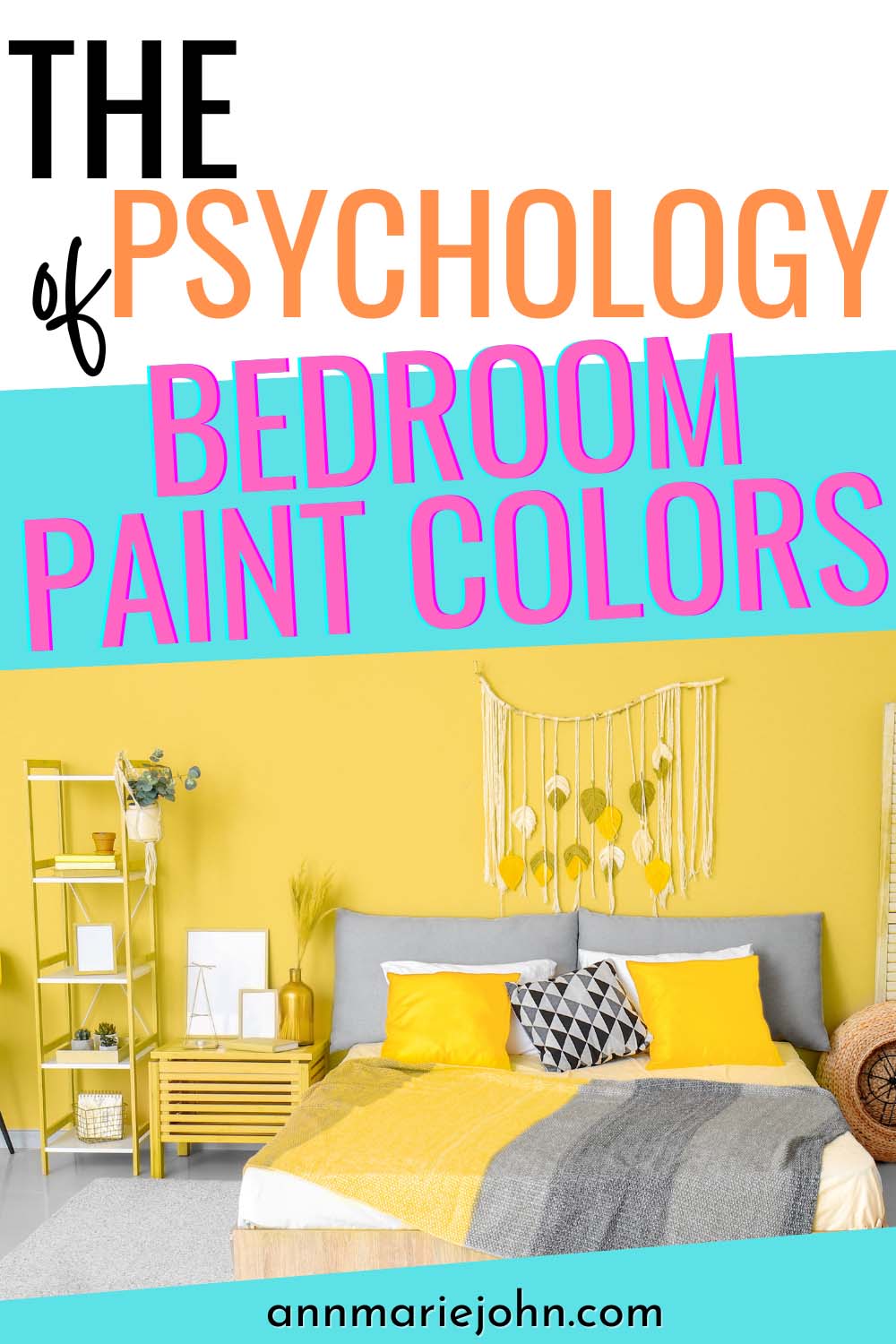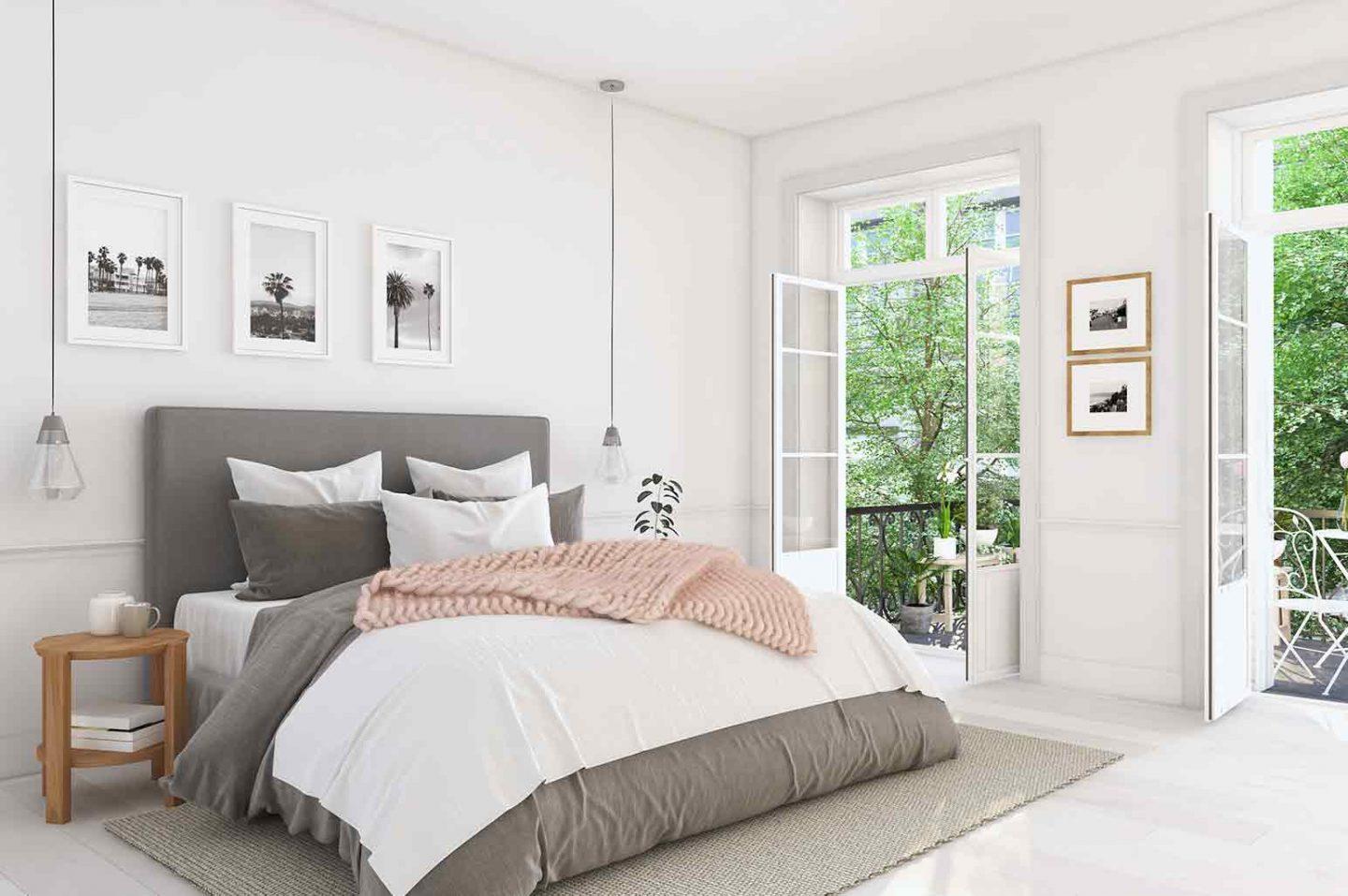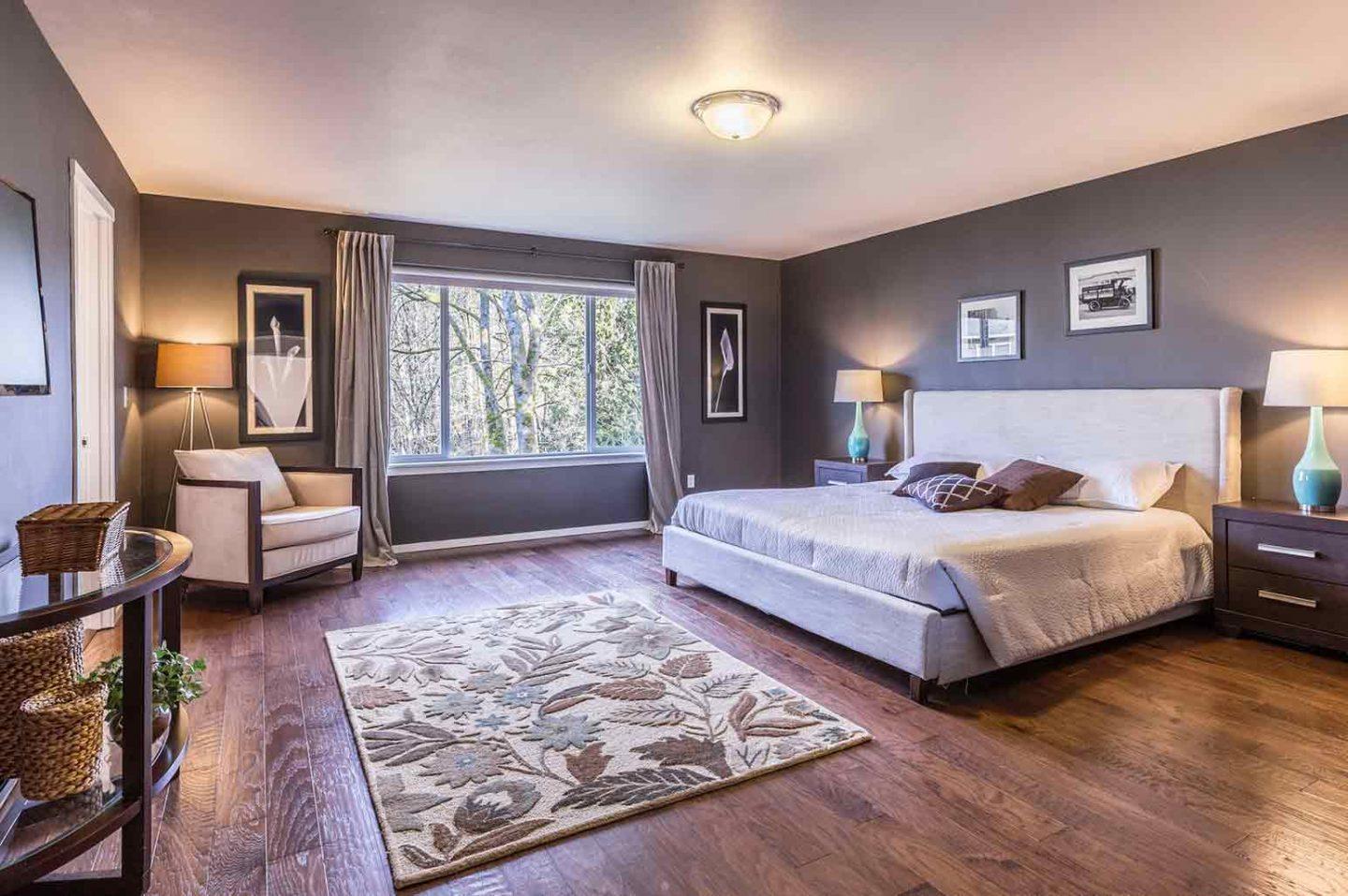Uncover the psychological impact of bedroom paint colors. Learn how hues influence mood, sleep, and relaxation for better interior design decisions.

Imagine walking into your bedroom after a long day. The colors around you can either lift your spirits or weigh you down. Here’s where the magic of psychology and interior design meet. As an interior designer with a psychology background, I’ve seen countless times how the right paint color transforms not just spaces but also moods and emotions.
Selecting the right bedroom colors, like soft blues and gentle greens, goes beyond aesthetics to enhance sleep and well-being while avoiding pitfalls like improper lighting or overly bright hues.
Understanding the subtle effects of color choices can help you transform your bedroom into a peaceful retreat that enhances your sleep and well-being. Read on to learn more about creating your ideal sanctuary.

Understanding Color Psychology
The world of color psychology opens up a fascinating story about how colors affect our emotions, behaviors, and even decisions. It’s more than just for visuals; it’s an emotional journey.
- The Basics of Color Psychology: Color psychology tackles how hues influence our mental and emotional states. Different colors can trigger feelings, from calm and soothing to energized and alert. This understanding is important for creating spaces that look good and feel right.
- Warm vs. Cool Colors: Warm colors, such as red, orange, and yellow, stimulate and energize. They’re reminiscent of fire and sunlight, bringing warmth and comfort, but they can also increase agitation and energy levels. Cool colors, like blue, green, and purple, have the opposite effect. They’re calming and relaxing, evoking the serenity of water and the sky.
- The Effect of Colors on Mood: Colors don’t just change the look of a room; they change how it feels to be in it. Blue, for instance, can make a room feel calm and restful, making it ideal for bedrooms and bathrooms. Red, on the other hand, adds vibrancy and passion but can be too intense for some spaces.
- Color and Spatial Perception: Colors can also alter our perception of space. Light colors make a room feel larger and airier, while dark colors can make it feel smaller and cozier. This is a big consideration in interior design, as the color choice can optimize the use of space.
- Personal Preferences and Cultural Differences: Personal experiences and cultural backgrounds significantly influence how individuals look at different colors. What one person finds relaxing, another might find depressing. Understanding these differences is vital in selecting colors that resonate on a personal level.
The Psychological Impact of Specific Bedroom Colors
Choosing the right color for your bedroom is not just about what looks good. It’s about how colors influence your mood, feelings, and sleep quality.
Blue: Serenity Now
Blue is often cited as the most beneficial color for bedrooms. Its connection to the sky and sea invokes a sense of calm and serenity.
Lighter blues, such as Sky Blue, Powder Blue, Baby Blue, Aquamarine, and Ice Blue, can help reduce stress and create a tranquil, sleep-friendly space.
However, darker blues like Navy Blue, Midnight Blue, Royal Blue, Indigo, and Teal Blue should be used sparingly, as they sometimes make a room feel cold or gloomy.
Green: Nature’s Embrace
Green, the color of nature, is incredibly restful for the eyes and promotes relaxation and tranquility. It’s associated with renewal, health, and balance, making it an excellent choice for a refreshing sleep environment.
Shades of green mirror the outdoors and can help bring the calming essence of nature into your bedroom. Recommended green shades for bedrooms are Sage Green, Mint Green, Olive Green, Seafoam Green, and Emerald Green.
Yellow: Sunshine in Your Room
When used correctly, yellow can bring sunshine into your room, promoting happiness and optimism. Lighter yellows, such as Butter Yellow, Lemon Chiffon, Pale Daffodil, Sunbeam, and Vanilla, can make a bedroom warm and welcoming.
However, avoid brighter yellow shades like Canary, Sunflower, Neon, Goldenrod, and Cadmium Yellow. Overusing these vibrant shades can be overstimulating, making it difficult to relax.
Red: Passion with Caution
Red is an intense color that evokes passion, energy, and excitement. Remember the movie “Red Room”? Intense, right?
While it might be too stimulating for a bedroom where relaxation is the goal, using softer shades of red like Dusty Rose, Terracotta, Coral, Blush Red, or Cinnamon or incorporating it in accents can bring warmth and vibrancy to the room without overwhelming the senses.
Purple: Luxurious Comfort
Purple combines the calm stability of blue with the fierce energy of red. Lighter shades like Lavender, Lilac, Mauve, Periwinkle, and Orchid are soothing. They can lend an air of sophistication and luxury to your bedroom.
However, darker purples like Eggplant, Plum, Royal Purple, Indigo, and Byzantium might be too gloomy and stimulating, potentially disrupting sleep.
Orange: Warmth and Creativity
Orange, a blend of red and yellow, can bring warmth, enthusiasm, and creativity into your bedroom. It’s invigorating and best used in moderate amounts or softer shades like peach or terracotta.
These hues can make your bedroom feel cozy and comforting.
White: Simple and Serene
White is often overlooked but can make a bedroom feel open, light, and airy. It offers a clean backdrop that can be accentuated with colorful accents.
White symbolizes purity and peace, contributing to a calm and restful night’s sleep.

Colors to Promote Restful Sleep
Creating a serene bedroom environment conducive to restful sleep is essential for our well-being, and the colors we surround ourselves with play a significant role in this process.
- Soft Blues: Soft blues, reminiscent of the sky or a calm sea, are widely recognized for their soothing properties. These hues can lower heart rates and reduce blood pressure, making them ideal for promoting relaxation and sleep. Incorporating soft blues into your bedroom can create a tranquil sanctuary that encourages unwinding at the end of the day.
- Gentle Greens: Gentle greens, inspired by nature, bring balance and renewal. Shades like sage or moss are particularly effective in bedrooms, offering a restful backdrop that mimics the calming essence of the outdoors. These colors not only soothe the eyes but also the mind, aiding in stress relief and relaxation.
- Lavender and Light Purples: Lavender and light purples combine the calming stability of blue with a touch of energizing red. Lavender, known for its relaxing scent, also works visually to calm nerves and enhance sleep quality. These hues are perfect for creating a peaceful retreat that encourages deep and restorative sleep.
- Warm, Soft Earth Tones: Warm, soft earth tones like beige, taupe, or soft terracotta can create a cozy and comforting bedroom environment. These colors are grounding and offer a sense of security, making it easier to relax and drift off to sleep. When paired with soft lighting, earth tones warmly envelop the room, perfect for soothing the mind.
- Neutral Pastels: Neutral pastels, including soft pinks, peaches, and light yellows, can add a touch of warmth and serenity without overwhelming the senses. These colors gently reflect natural light, creating a calming environment for relaxation and sleep. Neutral pastels are versatile and can be easily paired with various decor styles to create a restful bedroom space.
Implementing Color Psychology in Bedroom Design
Incorporating color psychology into bedroom design isn’t just about choosing your favorite colors; it’s about understanding how these colors affect your mood, sleep, and overall well-being.
Choose Your Base Color Wisely
Your base color sets the tone of the room. Consider soft blues, gentle greens, or neutral pastels for a calming effect. These colors promote relaxation and can help reduce stress and anxiety, making it easier to fall asleep.
Consider the mood you want to evoke in your bedroom and select your base color accordingly.
Accent Colors for Balance and Harmony
Accent colors can add depth and interest to your bedroom without overpowering the calming effect of your base color. Choose accents that complement or contrast your base color in a way that maintains balance.
For instance, a warm wood tone like that of a solid wood bed frame made by the Amish can complement soft blues and greens, adding a touch of warmth and luxury.
Consider the Psychological Effects
Understand the psychological effects of your chosen colors. For example, while red might be your favorite color, its energizing properties could make it less ideal for a bedroom.
If you’re drawn to warmer hues, opt for muted or softer shades like terracotta or blush red for accents that don’t disrupt the room’s tranquility.
Textures and Fabrics Matter
The texture and fabric in your bedroom can also influence the room’s mood. Soft, plush textures in bedding, curtains, and rugs can enhance your chosen colors’ comfort.
Natural materials like wood and stone can ground the space, adding to the room’s overall sense of calm.
Lighting Is Key
Lighting plays a significant role in how colors are perceived. Natural light can make soft colors feel brighter and more airy, while artificial lighting can enhance the warmth of certain hues.
When choosing your bedroom colors, consider the quality and source of light, ensuring they harmonize to create the desired ambiance at different times of the day.

Common Mistakes to Avoid in Bedroom Color Selection
Selecting the right colors for a bedroom involves more than just picking your favorite shades. Be mindful of common pitfalls to create a space that promotes relaxation and well-being. Here’s a look at some of the most frequent mistakes to avoid.
Overlooking the Effect of Lighting
One common mistake is neglecting the impact of lighting on paint colors. Natural and artificial light can dramatically change how a color looks on your walls at different times of the day.
For instance, a color that seems perfect under the store’s lights might look entirely different in your bedroom. Testing paint samples under the lighting conditions in your room is essential to ensuring the color works as intended throughout the day.
Choosing Overly Bright or Saturated Colors
While vibrant colors might be appealing, using them extensively in a bedroom can be overstimulating and hinder relaxation. Bright reds, oranges, and even certain yellows can make it difficult to wind down before bedtime.
Opting for softer, muted versions of your favorite colors can create a more restful environment conducive to sleep.
Ignoring the Room’s Size and Scale
Another mistake is not considering the room’s size and scale when choosing colors. Dark colors can make small rooms feel even smaller and more confined, while light colors can help make a room feel more spacious and airy.
If you’re drawn to darker hues, consider using them on an accent wall or in combination with lighter colors to maintain a balanced feel.
Forgetting About Color Psychology
Forgetting to consider color psychology is a missed opportunity when designing a bedroom. Different colors evoke different moods and emotions; for instance, blues and greens are typically calming and soothing, making them ideal for bedrooms.
Incorporating elements of color psychology into your selection process can help create a space that looks good and feels welcoming and relaxing.
Not Creating a Cohesive Look
Finally, consider how your chosen paint color will work with the rest of your bedroom’s decor. A common mistake is selecting a wall color in isolation without considering the room’s overall color scheme, including furniture, textiles, and accessories.
Ensuring your wall color complements these elements can create a cohesive, harmonious space.
Crafting Your Sanctuary: A Colorful Conclusion
Transforming your bedroom from just a sleeping space into a personal haven hinges on the strategic use of color. It’s about aligning your unique style with colors that look good and feel good, fostering peace, and promoting restful sleep.
Making informed choices and being mindful of lighting and the emotional impact of colors ensures your space is not just beautiful but a true sanctuary of calm. Let the fusion of your personal touch and the wisdom of color psychology guide you to a bedroom that’s genuinely your retreat.
